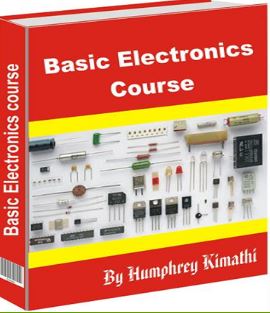When you open electronics
equipment like the television for the first time, one can easily get intimidated
by the number of components in there.
This shouldn’t be the case if you have adequate knowledge in basic electronics especially on basic functions of the components and how to read circuit diagram.
Actually in my case if
I have a problem with electronics equipment I never rush to open it first, and
especially if there is something on the screen.
First I analyze the symptom
systematically till I am very sure which circuit block is causing such a symptom.
Then I google that
particular model if it is a television and download its circuit diagram and
again check out the particular circuit which I suspect to be causing the
problem.
On this preliminary
investigation I mark out on the actual circuit diagram the most likely culprit
components with a highlighter.
After that I open up
the set and go straight to the suspected circuit. First I scan with my
naked eyes for any signs of stress or burnt area on that particular circuit.
If I am happy with the
visual inspection, then i do voltage testing to that circuit to see if they are
all okay and within the expected range as per the circuit diagram.
How do I know the
related components in a particular circuit like the vertical circuit, audio
circuit and horizontal drive and horizontal output stage?
This is where related components
rule come in, you know in electronics equipment, components are usually
arranged in a very orderly manner and in blocks just like in a house you have a
kitchen, table room, dining room and bedroom.
All those rooms require
lighting and therefore I don’t expect if the bulb in the kitchen goes off (faulty)
you go and change the bulb in the bedroom and think that you have solved the
problem, and by the way that is why you should check the power first because if
the place is dark then you cannot do anything in the darkness, same with the
actual electronics equipment.
If you find no power or
power not good just go ahead and restore the power on that block (room) first.
So how will i know
what belongs to the kitchen and what belongs to the bedroom, my guess is as
good as yours.
Usually kitchen items
should be kept in the kitchen and bedroom item should be kept to the bedroom.
In electronics same
components are usually used in different blocks and therefore it will be
confusing to know if this component belong to audio/vertical/ or even power
supply.
For example you will
get a capacitor in virtually all circuits, so how do you differentiate a
capacitor on the audio circuit and a capacitor on the vertical circuit.
To differentiate all
circuit board are labeled on the pcb board and usually related components are
grouped together.
Let have a look at this
actual picture of an audio circuit of this Jvc television.
In this television you
can see the audio block (room) is clearly marked with borders and also labelled
Audio, also note that the major component here is the audio ic(I.C651)
So in audio block
expect the related components to start with Y6XX, Y refers to component
category like C-capacitor, R-resistor, Q-transistor, IC-integrated circuit etc.
then 6 is the relationship as in this case we have the audio group and the XX
is the component Reference number.
So if we have only two
ic in that block we will have I.C651 and I.C652 etc
You can see the same
block component side here.
So whenever you suspect
audio problem this is where you are to concentrate on.
Below again you can see
a section of horizontal circuit block of the same TV and all component are
grouped in series Y5XX, so any component with that series belong to horizontal
output circuit.
Here is the same block
component side.
When I wrote my book
CRT Television course I was able to identify eighteen blocks in CRT TV and I
have analyzed each block and the most common faults in each block and I think
this is why the book has remained the favorites to many students majoring in
television repair.
Thanks you guys
See you in the next
class
Stay safe
Humphrey Kimathi






Very Good.
ReplyDeleteThanks and welcome my friend, long time.
DeleteRegards Humphrey
Hi sir,
ReplyDeleteVery nice to see this its very informative & very supportive to identify the culprit component in a particular circuit block thanks for sharing this.